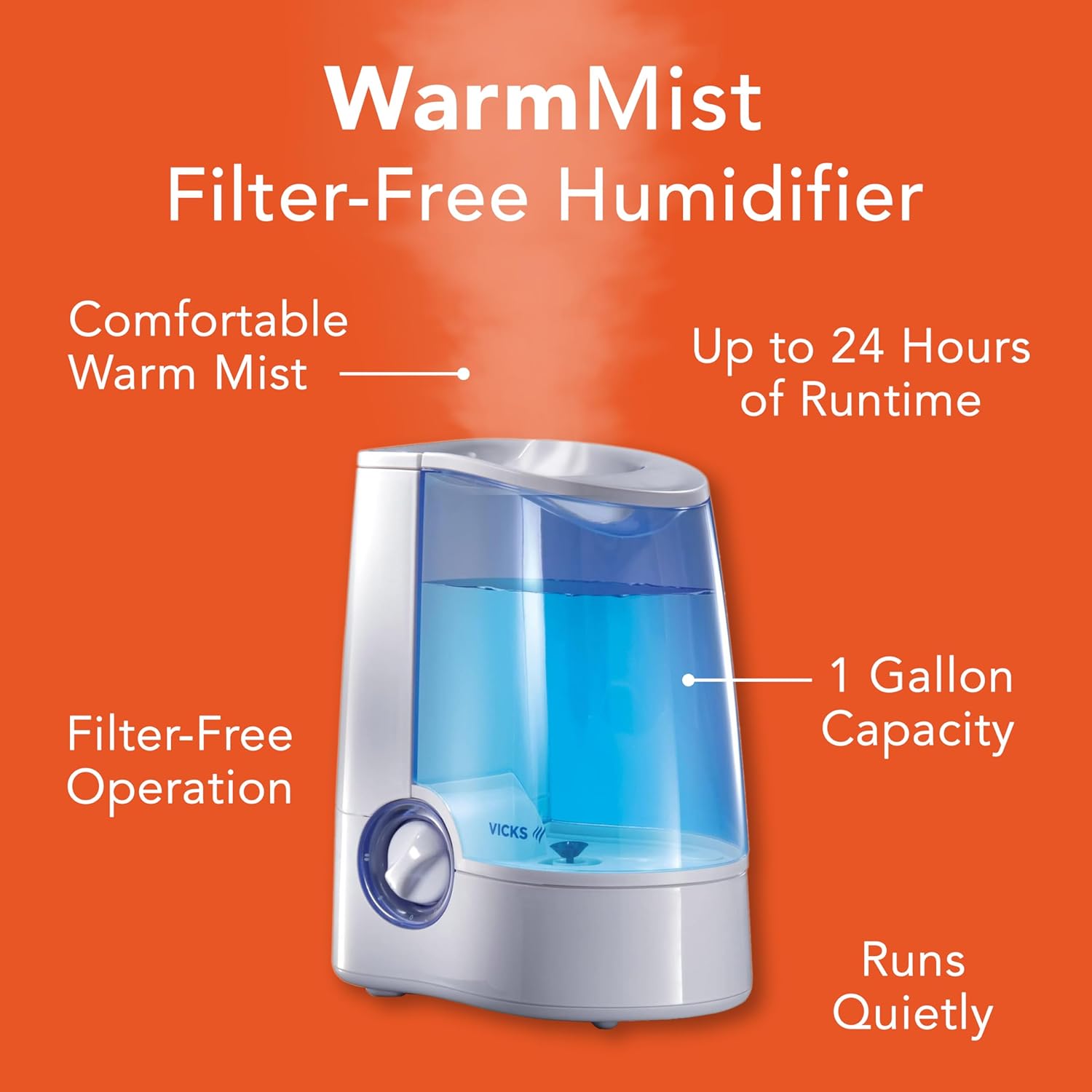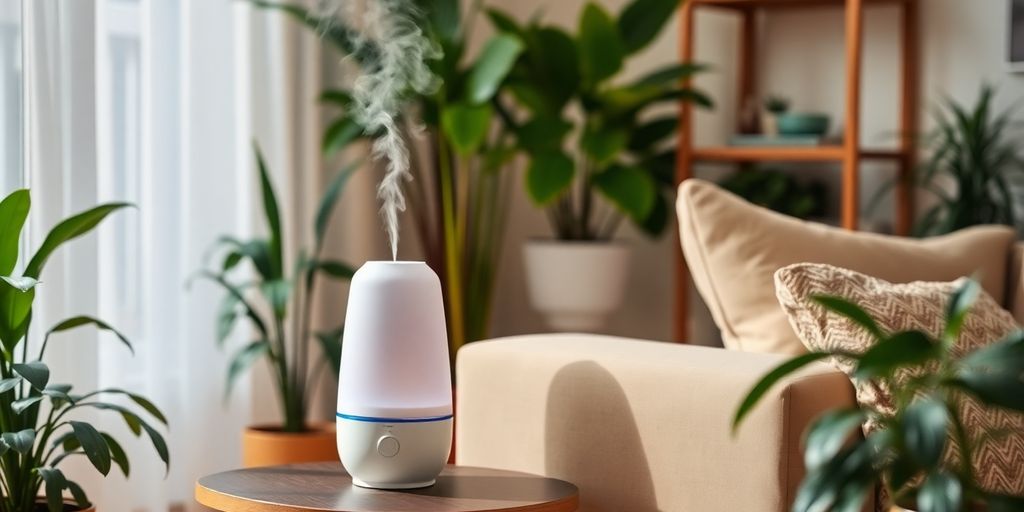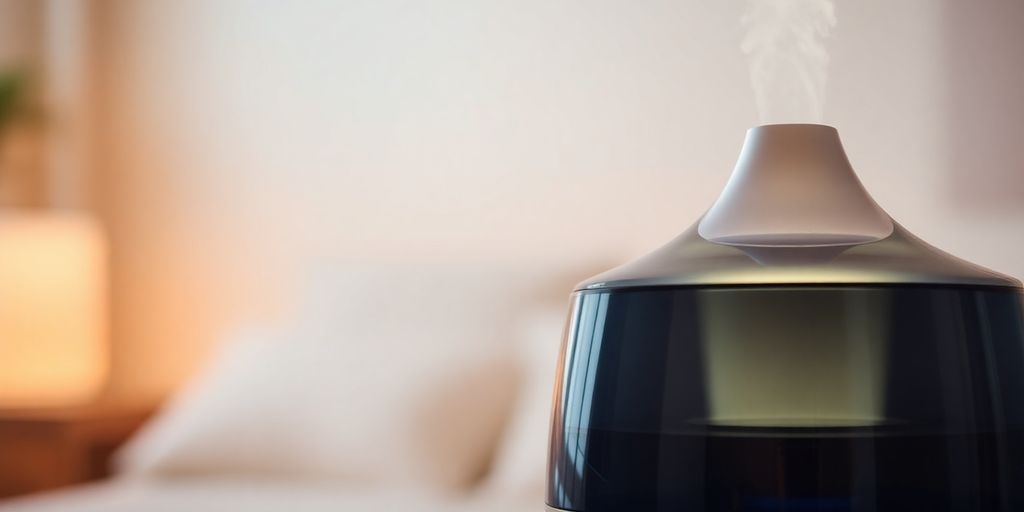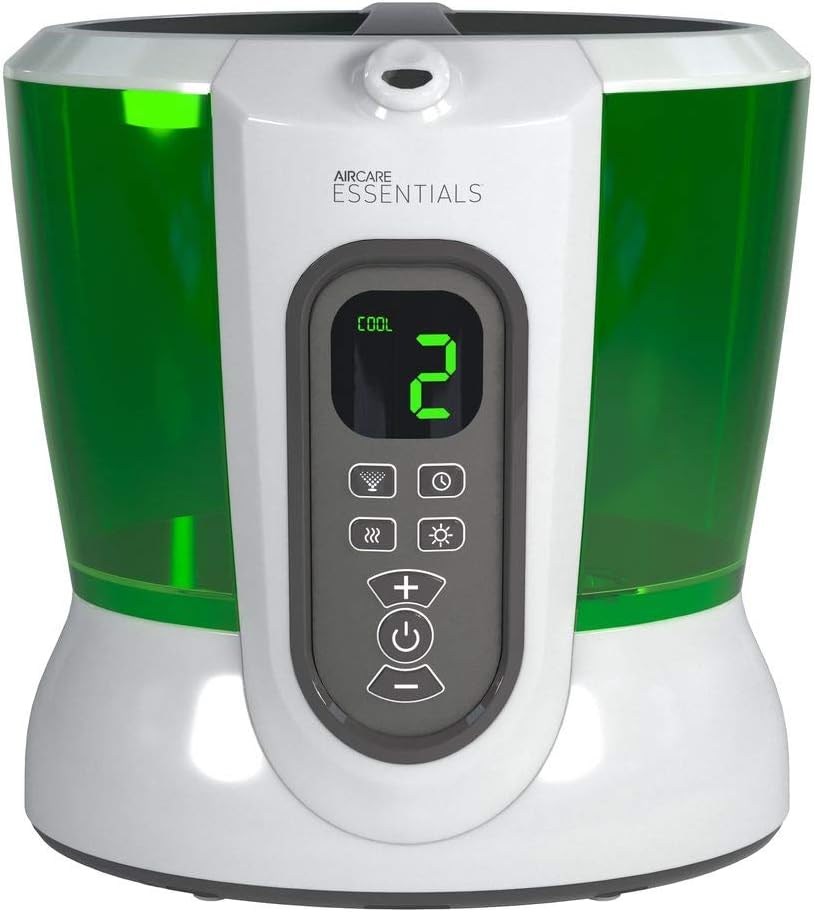Can Humidifiers Alleviate Allergy Symptoms?
Allergies can really throw a wrench in your day, whether they’re seasonal or stick around all year. It’s natural to wonder if there’s anything that can help, and humidifiers often come up in that conversation. So, can they actually make a difference? Let’s take a look.
Understanding Humidifiers and Their Benefits
Okay, so what exactly is a humidifier? Basically, it’s a device that adds moisture to the air. This can be super helpful, especially when the air is dry, like during the winter months. There are a few different types out there, each with its own perks. You’ve got warm mist, cool mist, and ultrasonic humidifiers, just to name a few. The benefits of using humidifiers for allergy relief are numerous, but it’s important to understand how they work to get the most out of them.
How Humidity Levels Impact Allergies
Humidity plays a big role in how your allergies feel. Too little humidity, and your nasal passages get dry and irritated. Too much, and you’re creating a breeding ground for dust mites and mold. Finding that sweet spot is key. Ideally, you want to aim for a humidity level between 40-50%. This can help keep your sinuses happy and reduce the nose and dry throat that allergies can bring on.
The Importance of Regular Maintenance
Here’s the thing: humidifiers can be great, but they require some upkeep. If you don’t clean them regularly, they can become a breeding ground for bacteria and mold, which can actually worsen your allergy symptoms. Make sure to clean your humidifier according to the manufacturer’s instructions, and use distilled water to prevent mineral buildup. Also, consider the best humidifiers for allergy sufferers that are easy to clean and maintain. Following these allergy management tips with humidifiers will help you breathe easier and keep your allergies at bay.
The Relationship Between Humidity and Allergies
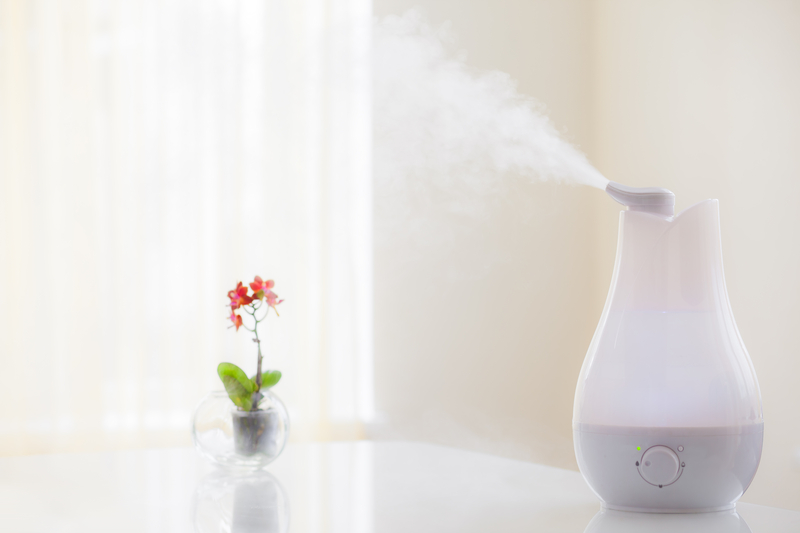
It’s a common question: can humidifiers actually help with allergies? To really get to the bottom of it, we need to understand how humidity affects allergy symptoms and how humidifiers work in the first place. It’s not as simple as just adding moisture to the air; there’s a balance to strike.
How Humidity Affects Nasal Passages
Think of your nasal passages like a delicate ecosystem. When the air is dry, those passages can become irritated, leading to that scratchy throat and stuffy nose feeling. A humidifier can add moisture, which can soothe those irritated tissues. It’s like giving your nose a drink of water! But there’s a catch – too much humidity can cause problems too.
Finding the Ideal Humidity Level
So, what’s the magic number? Generally, you want to aim for a humidity level between 40-50%. Anything higher, and you risk creating a breeding ground for dust mites and mold, which are major allergy triggers. You can grab a hygrometer – they’re not too expensive – to keep an eye on the humidity levels in your home. It’s a small investment that can make a big difference. Maintaining appropriate indoor humidity levels is key.
Humidity’s Role in Allergy Management
Humidity plays a pretty big role in managing allergies, but it’s a double-edged sword. Too little, and you’re dealing with dryness and irritation. Too much, and you’re inviting allergens to thrive. Finding that sweet spot is crucial for alleviating these allergy symptoms. Here’s a quick rundown:
- Dry Air: Can worsen symptoms like a stuffy nose and scratchy throat.
- High Humidity: Encourages the growth of mold and dust mites.
- Balanced Humidity: Helps keep nasal passages moist and reduces irritation.
It’s all about creating a comfortable and healthy indoor environment. So, keep an eye on those humidity levels and adjust as needed!
Types of Humidifiers and Their Uses
So, you’re thinking about getting a humidifier? Great! But did you know there are actually different kinds? It’s not just a one-size-fits-all situation. Let’s break down the main types so you can figure out which one is best for you and your allergy needs.
Warm Mist vs. Cool Mist
Okay, this is the big one. Warm mist humidifiers boil water and release steam. They can be really soothing, especially if you’re dealing with congestion. The downside? They can be a burn hazard, especially around kids and pets, so you have to be careful where you put them. Cool mist humidifiers, on the other hand, use a fan or ultrasonic vibrations to create a cool mist. They’re generally safer and often better for larger spaces. Some people find cool mist more comfortable to breathe, especially in warmer weather.
Evaporative and Ultrasonic Humidifiers
Let’s dive a little deeper into cool mist options. Evaporative humidifiers use a fan to blow air through a wet wick or filter. It’s a pretty simple system. The water evaporates, adding moisture to the air. Ultrasonic humidifiers are a bit more high-tech. They use ultrasonic vibrations to create a fine mist. They tend to be quieter than evaporative models, which is a plus if you’re a light sleeper.
Choosing the Right Humidifier for Your Needs
So, how do you pick the right one? Here’s a quick rundown:
- Room Size: Small room? A warm mist or small cool mist humidifier might be perfect. Larger space? Go for a larger cool mist or evaporative model.
- Safety: If you have kids or pets, a cool mist humidifier is probably the safer bet.
- Noise Level: If you’re sensitive to noise, look for an ultrasonic humidifier.
- Maintenance: Some humidifiers require more cleaning than others. Consider how much effort you’re willing to put in.
- Cost: Prices can vary widely, so set a budget before you start shopping.
Maintaining Indoor Air Quality

The Role of Humidifiers in Air Quality
So, can humidifiers actually help with improving indoor air quality for allergies? Absolutely! They add moisture to the air, which can ease a lot of allergy symptoms. Think of it like this: dry air can make your nasal passages dry and irritated, making you more sensitive to allergens. A humidifier can combat that. However, it’s not a magic bullet and needs to be used correctly.
Balancing Humidity Levels
It’s a balancing act. Too little humidity, and you’re back to square one with dry air woes. Too much, and you’re creating a breeding ground for mold and dust mites – two things that can make allergies even worse. Aim for a humidity level between 30% and 50%. A hygrometer can help you keep track.
Preventing Mold and Dust Mites
Here’s the deal: humidifiers can contribute to mold and dust mite growth if you’re not careful. To prevent this:
- Regularly clean your humidifier. We’re talking at least once a week.
- Use distilled or demineralized water. Tap water can contain minerals that promote bacterial growth.
- Monitor humidity levels. Don’t let them creep too high.
- Ensure good ventilation in your home. Open windows when possible to circulate air.
- Consider using a dehumidifier in conjunction with a humidifier, especially in damp climates.
Humidifiers and Seasonal Allergies
Winter Dryness and Allergy Relief
Winter can be brutal for allergy sufferers. The air gets super dry, and that just makes everything worse. Think about it: your skin is dry, your nose is dry, and your throat is scratchy. It’s a recipe for misery! That’s where humidifiers come in. They can add much-needed moisture back into the air, helping to alleviate some of that dryness and make you feel a bit more comfortable. A humidifier can be a real game-changer during those harsh winter months.
Springtime Pollen and Humidity
Spring is beautiful, but for allergy sufferers, it’s a nightmare of pollen. And sometimes, spring can also bring higher humidity levels. Now, while humidifiers are great for dry air, you don’t want to overdo it when pollen is already high. Too much humidity can actually encourage mold growth, which is another allergen. It’s a balancing act! Here are some things to keep in mind:
- Monitor pollen counts daily.
- Use your humidifier judiciously, if at all, during peak pollen times.
- Consider an air purifier to help remove pollen from the air.
Managing Allergies Year-Round
Allergies aren’t just a seasonal thing for some people; they’re a year-round battle. Whether it’s dust mites, pet dander, or mold, there’s always something lurking. Humidifiers can be a helpful tool in managing these allergies, but they’re not a magic bullet. It’s important to think of them as part of a bigger strategy. Here’s what I mean:
- Keep your home clean and dust-free.
- Use allergy management strategies like medication or immunotherapy.
- Maintain your humidifier properly to prevent mold and bacteria growth.
Tips for Using Humidifiers Effectively
Setting the Right Humidity Level
Okay, so you’ve got a humidifier. Awesome! But just plugging it in and letting it run wild isn’t the best approach. You’ve got to think about the humidity level. Ideally, you want to keep your indoor humidity between 30% and 50%. Too low, and you’re still dealing with dryness. Too high, and you’re basically inviting mold and dust mites to throw a party in your house. Grab a humidifier with a humidistat to help you monitor and maintain the right balance. It’s like having a thermostat, but for moisture!
Cleaning and Maintenance Tips
Let’s be real, cleaning isn’t anyone’s favorite chore, but with humidifiers, it’s super important. A neglected humidifier can become a breeding ground for bacteria and mold, which then gets sprayed into the air you breathe. Yuck! Here’s the deal:
- Empty and dry the humidifier daily. Don’t let water sit in there.
- Clean it thoroughly at least once a week. Vinegar is your friend for removing mineral buildup. Some people use diluted bleach, but make sure you rinse really well afterwards.
- Change the water frequently. Stale water is gross water.
- Consider using distilled water instead of tap water. Tap water has minerals that can cause buildup and white dust.
Basically, treat your humidifier like you’d treat any other appliance that comes into contact with water – keep it clean! It’s worth checking out some guides on how to clean your humidifier to make sure you’re doing it right.
When to Seek Professional Help
Most humidifier issues are pretty straightforward, but sometimes, you might need to call in the pros. If you’re experiencing any of the following, it’s time to get some expert advice:
- Your humidifier is constantly malfunctioning, even after cleaning.
- You suspect mold growth in your HVAC system or elsewhere in your home due to excessive humidity.
- You have persistent respiratory issues that you think might be related to your humidifier use.
- You’re not sure what type of humidifier is best for your home or how to properly maintain it.
Don’t be afraid to reach out to an HVAC technician or allergy specialist. They can help you troubleshoot problems and ensure that your humidifier is actually helping, not hurting, your indoor air quality.
Common Misconceptions About Humidifiers
Do Humidifiers Cause Mold?
Okay, let’s clear this up right away. Humidifiers themselves don’t cause mold, but they can contribute to mold growth if you’re not careful. Think of it this way: mold loves moisture. If you let your humidity levels get too high, you’re basically creating a breeding ground for the stuff. It’s all about balance.
- Keep an eye on your humidity levels. Aim for that sweet spot between 30-50%.
- Clean your humidifier regularly. We’re talking weekly cleanings to prevent bacteria and mold from setting up shop inside the unit.
- Make sure there’s proper ventilation in the room. Don’t trap all that moisture in a small space.
Are All Humidifiers the Same?
Nope, not even close! It’s like saying all cars are the same – they all get you from point A to point B, but there are huge differences in how they do it. With humidifiers, you’ve got a few main types, and they each have their own pros and cons. For example, whole home humidifiers are great for maintaining consistent humidity throughout your house, while others are better for smaller spaces.
- Warm Mist Humidifiers: These boil water and release steam. They can be good for congestion but be careful around kids because of the hot water.
- Cool Mist Humidifiers: These use a fan or ultrasonic vibrations to create a cool mist. They’re generally safer and use less energy.
- Evaporative Humidifiers: These use a wick filter to absorb water and a fan to blow air through it, creating humidity. They’re self-regulating, meaning they won’t over-humidify a room.
Understanding Humidity Myths
There are a lot of old wives’ tales floating around about humidity, so let’s bust a few. One common one is that you don’t need a humidifier in the summer. While it’s true that summer air is generally more humid, your AC can dry things out. Another myth is that more humidity is always better. Nope! Too much humidity can be just as bad as too little, leading to mold growth and discomfort. Finding the right balance is key. Remember, allergy symptoms can be worsened by improper humidity levels.
- Myth: Humidifiers are only for winter. Fact: They can be useful year-round, depending on your climate and indoor conditions.
- Myth: You can just fill a humidifier with tap water. Fact: Distilled water is best to prevent mineral buildup and the release of harmful particles into the air.
- Myth: You don’t need to clean your humidifier if you use distilled water. Fact: You still need to clean it regularly to prevent bacteria growth.
Wrapping It Up
So, there you have it! Humidifiers can really make a difference when it comes to managing allergies and improving the air quality in your home. By keeping the humidity at just the right level, they can help ease those annoying symptoms like dry skin and stuffy noses. Just remember, it’s all about balance—too much humidity can lead to other issues like mold and dust mites. Make sure to keep your humidifier clean and check the humidity levels regularly. If you do that, you might just find that breathing easier is within reach. Give it a shot and see how it works for you!

